The extreme sports industry is still overwhelmingly male. Despite a slew of fabulous brands, clinics, non-profits, and companies geared toward getting womxn into extreme sports like mountain biking, rock climbing, backcountry skiing, motocross, BMX, surfing, and more, the vast majority of participants and supporters are men. There are far more professional male athletes than female athletes in extreme sports, with more competitions and awards (and sponsorship money) for men. It’s also men who work behind the scenes at most of these events, from agents and event producers to photographers, mechanics, climbing route setters, judges, and course builders and designers.
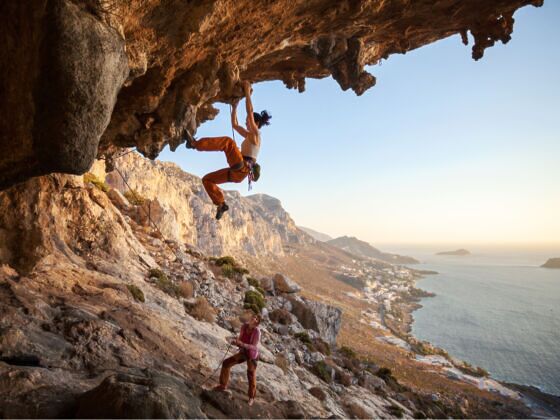

Women in Extreme Sports Discuss the Challenges of Working in a Male-Dominated Industry
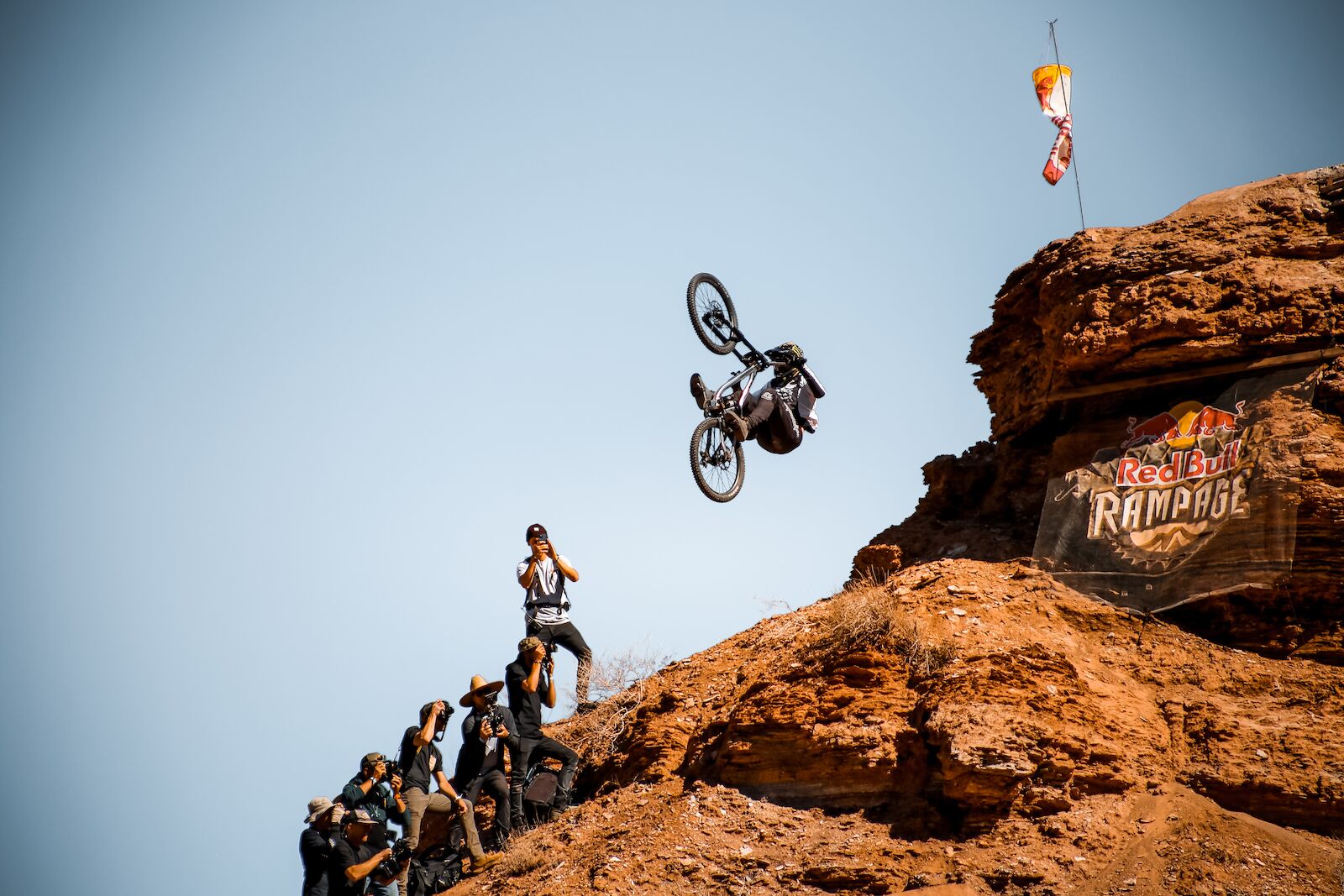
Male photographers crowding for a shot at 2021’s Red Bull Rampage. Photo: Suzie Dundas
According to a 2016 survey from Singletracks — a well-known mountain bike forum and website — only about 13 to 18 percent of its readers are women. A 2010 mountain biking survey found that just 14 percent of its respondents identified as female, and bike club membership rosters rarely have more than 20 percent female members. It’s the same with outdoor rock climbing (33 percent women) and backcountry skiing (about 25 percent women). While the percentage of women in extreme sports is rising, it still has a long way to go to even be close to even. We talked to three women working in the extreme sports industry and asked for their input on being a woman in such a male-dominated landscape. Here’s what they said.
Some quotes and copy have been edited for length and clarity.
Rima Rackauskas, Live Broadcast Producer
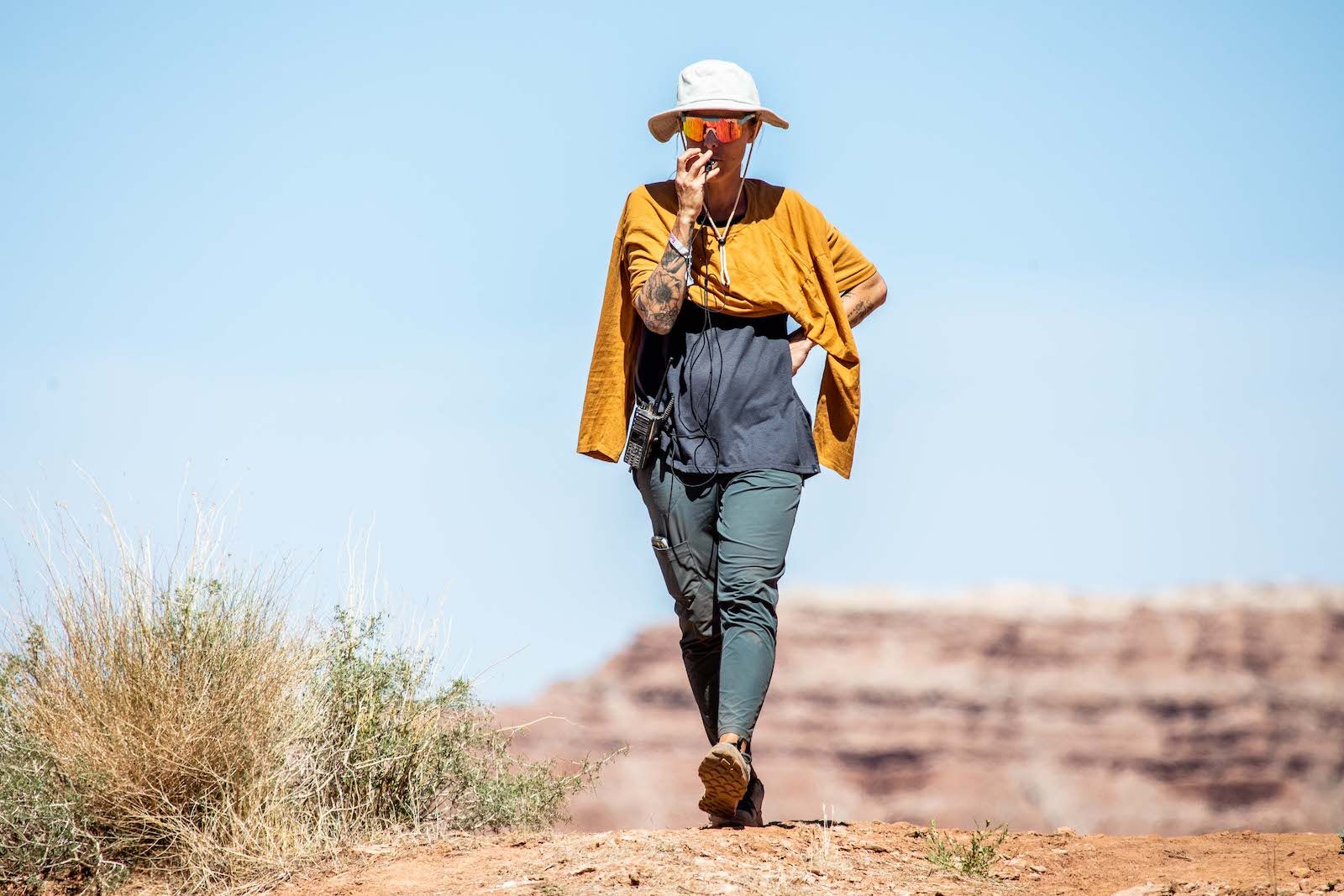
Photo: Rima Rackauskas
I write ’run downs’ for [outdoor and sports-focused] shows. Essentially, it’s how the show breaks down, what the announcers or hosts will talk about, and how much time is spent on each segment. During the event, I ‘call the show’ in the broadcast truck.
As a kid, I was a major tomboy and jock. I wanted to play every sport out there, but I whittled my passion down to just playing volleyball in my teens. I got a scholarship to a division one college but ended up with a career-ending injury. After a brief stint coaching volleyball, I decided I needed to get into a totally different industry — I was sad that I wasn’t out on the court still playing myself — so I moved to the mountains to snowboard.
I had been skiing since I was about three years old and started snowboarding when I was about 13. Since I had such an extensive background in sports and coaching, it was easy to hone my skills and convert myself into a snowboard coach. I was the first park-certified female snowboard coach in Park City.
I decided to pursue coaching and moved to Mammoth [Mountain], where I eventually was coaching young elite snowboarders. I spent a few summers in France where I got into downhill mountain biking while coaching glacier snowboard camps and decided to get back into downhill bike competitions after that. Growing up, I used to mountain bike in the Santa Monica Mountains, so that was a natural transition.
After a few years of racing, my friends thought I should also compete in motocross, so I dove into that as well. Once I was nearly in my 30s, my body really started to take a turn – I had just been hard on my body for too long, so I gave it all up and moved to the North Shore of Hawaii to surf. It was there that I fell into action sports events broadcasting (back then, it was just webcasting) and I’ve been doing that ever since.
Regarding the industry in action sports events and broadcast: about 11 or 12 years ago, I noticed obvious fraternalism in the industry. Just about any crew back then was all dudes, and it was very rare to have even one or two gals around. There was an especially obvious protective vibe around camera positions and roles inside the broadcast truck. I worked with a couple of directors who were flagrant chauvinists and clearly threatened by me.
Regarding action sports in general: back when I first started, there was a disparity between women and men, but I think that was wholly due to the lack of exposure. There were fewer women doing those sports, most likely because they weren’t exposed at a young age. Lucky for me, my dad was really supportive of all of our sporting endeavors at a very early age which helped us excel.
In the last 20 years since I’ve been in action sports, I’ve seen a radical transformation in the disparity. Not only are there much larger numbers of women participating, but they are getting really legitimately good at the sports. Gone are the days of the saying, “She’s good for a girl…” as these women have pushed the boundaries and are stomping radical tricks and just ripping.

Chelsea Kimball hits a canyon gap at Red Bull Formation in Virgin, Utah, USA on 31 May, 2021. Photo: Catherine Aeppel / Red Bull Content Pool
In 2021, I was at Red Bull Formation in Virgin, Utah, and I saw a small group of women’s freeride mountain bikers just blow the doors off what we thought was possible. They were doing huge and terrifying drops and hitting boosters, whipping tails with style and riding lines top to bottom that would make most dudes crap their pants. It was a legendary week for women’s sports and made me feel so proud to witness and be a part of creating that content to show the world what women can do.
The pros of being a woman in a male-dominated industry? Well, it’s nice to stand out and almost feel special in the sense that you feel like you broke through barriers to achieve those roles if you’re at the top of your field. That being said, it comes at a price. All the years, as I was trying to prove that I was worthy, I had to work extra hard – harder than any of the guys.
I had to also take a lot of abuse. I wasn’t always well received by men in supervisory roles. There were males in the broadcasting trucks who would make derogatory comments or just give me the cold shoulder. It was sometimes hard to maintain confidence and keep the strength to press on. When you are getting belittled or bullied, it’s hard not to give up. Lucky for me, my sports background taught me never to give up and to always take on a challenge.
Now, 12 years later, I’m so glad I pressed on. I absolutely love my job and the field I work in and I would say we’ve come a really long way with the gender issue. I see so many more women coming into our field of broadcasting – I now often work with women directors and am so impressed with their professionalism and skillsets. It also seems like men react differently to us when we have management roles. In general, I’d say now they are not only used to us in their space, they seem to see us as equals.
Emily Tidwell, action sports and lifestyle photographer
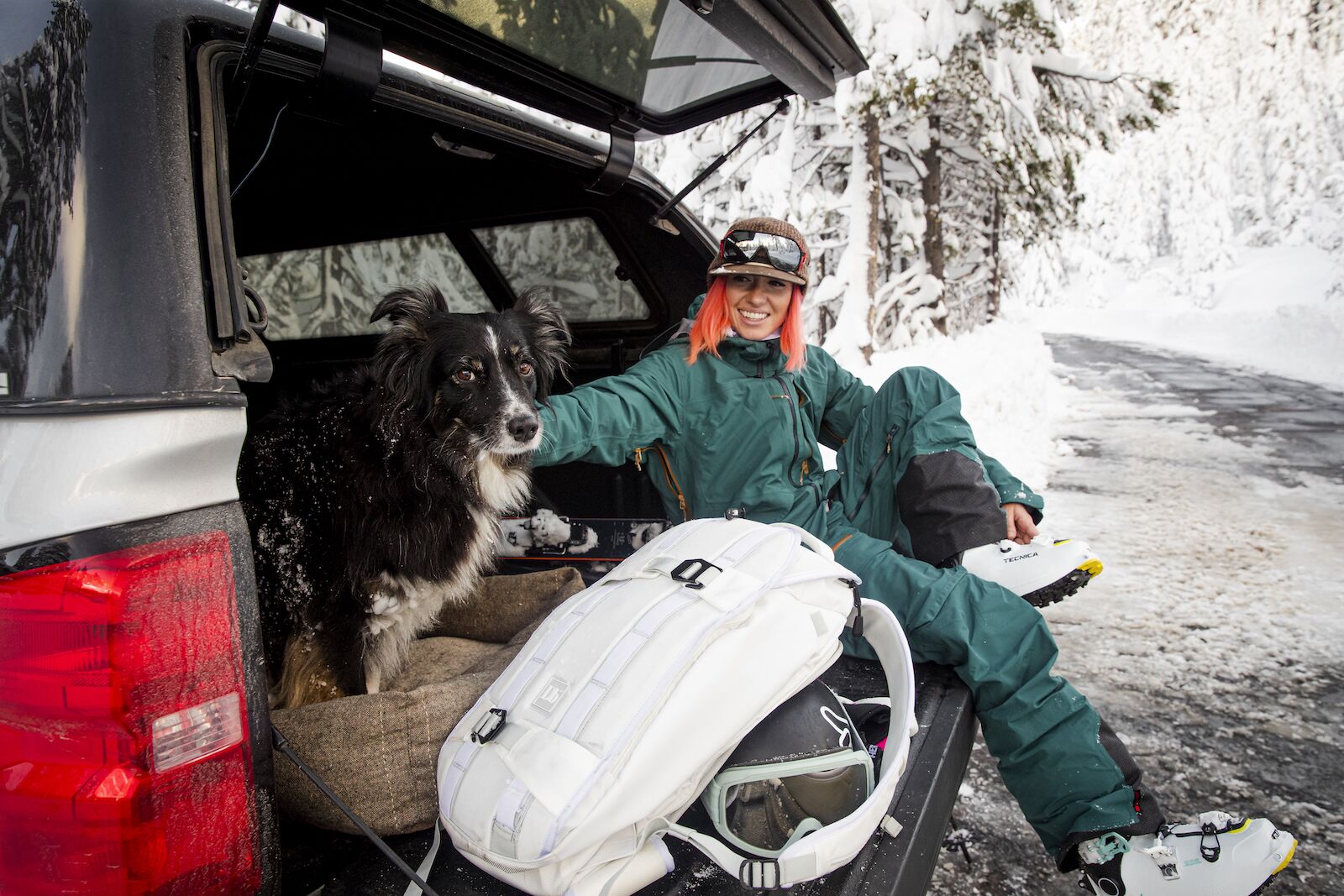
Photo: Emily Tidwell Photo
I’m an action and adventure lifestyle photographer in the outdoor industry, focused mostly on snow and bike culture. I’ve been capturing images in the outdoor industry for nearly a decade, shooting competitions such as Nine Knights and Red Bull Rampage as have had images featured for ski resorts and brands, both large and small.
I’ve absolutely been discriminated against due to my gender in the action industry. From being told it was better to submit my images under a male pseudonym to being questioned about my legitimacy with a camera and whether I know how to operate it or not, and even having people assume I only shoot with a man because I am somehow connected to him romantically. Macro- and micro-aggressions and gaslighting are still rampant in the outdoor industry.
Anytime someone attempts to prove me weak ultimately makes me work ten times harder to prove them wrong, so maybe that’s a pro about being a woman in the industry? I’m constantly having to prove myself. I think as a woman, I can more openly connect with my clients and athletes with ease compared to some of my male counterparts. But I think I regularly also get my strength questioned both mentally and physically and, due to my small stature, get disregarded as incapable of doing a job.
I constantly get told how to do my job by older men in my field. A particular moment that stands out to me in the past year was when I showed up at an event as the lead photographer. I had opened my pack to change a lens when a senior male operations leader in a different department asked me if I knew how to operate such a large camera. He then told me he was a photographer as well, but that he shot “elite athletes,” to which I replied that I did as well. He then paused and smiled and said “No, I mean real elite athletes” and then proceeded to tell me how I could make my job easier for myself that day.
My favorite part is when other men tell me that those things have never happened to me. And that sexism and misogyny do not exist in the outdoor industry and that, maybe, if I focused more on my job and less on my gender, things like that would not happen.
But the thing is, I don’t call myself a female photographer: I am a photographer. And a damn good one. The fact that my features are feminine is enough fuel for someone to say I’m focused on my gender, but I just want to go out and do the job I love. That’s all. And I don’t want to be discriminated against because of it.
Suzie Dundas, Matador Network outdoor editor
In October 2021, I flew out to Virgin, Utah, to cover Red Bull Rampage, one of the mountain bike world’s biggest events. Over the course of four days, 15 of the top freeride mountain bikers in the world get free reign to build whatever jumps and features strike their fancy. There’s no fixed route down, so athletes can drop off cliffs, ride down narrow shoots, or build massive jumps across gaps in the terrain. On competition day, riders get two chances to ride from the ridgeline to the scoring podium. And judging is simple: whoever takes the hardest, most impressive, and biggest ride down wins. It’s a popular spectator event that always sells out. As you might imagine, it involves some pretty massive jumps and tricks, not to mention the potential for critical injuries.
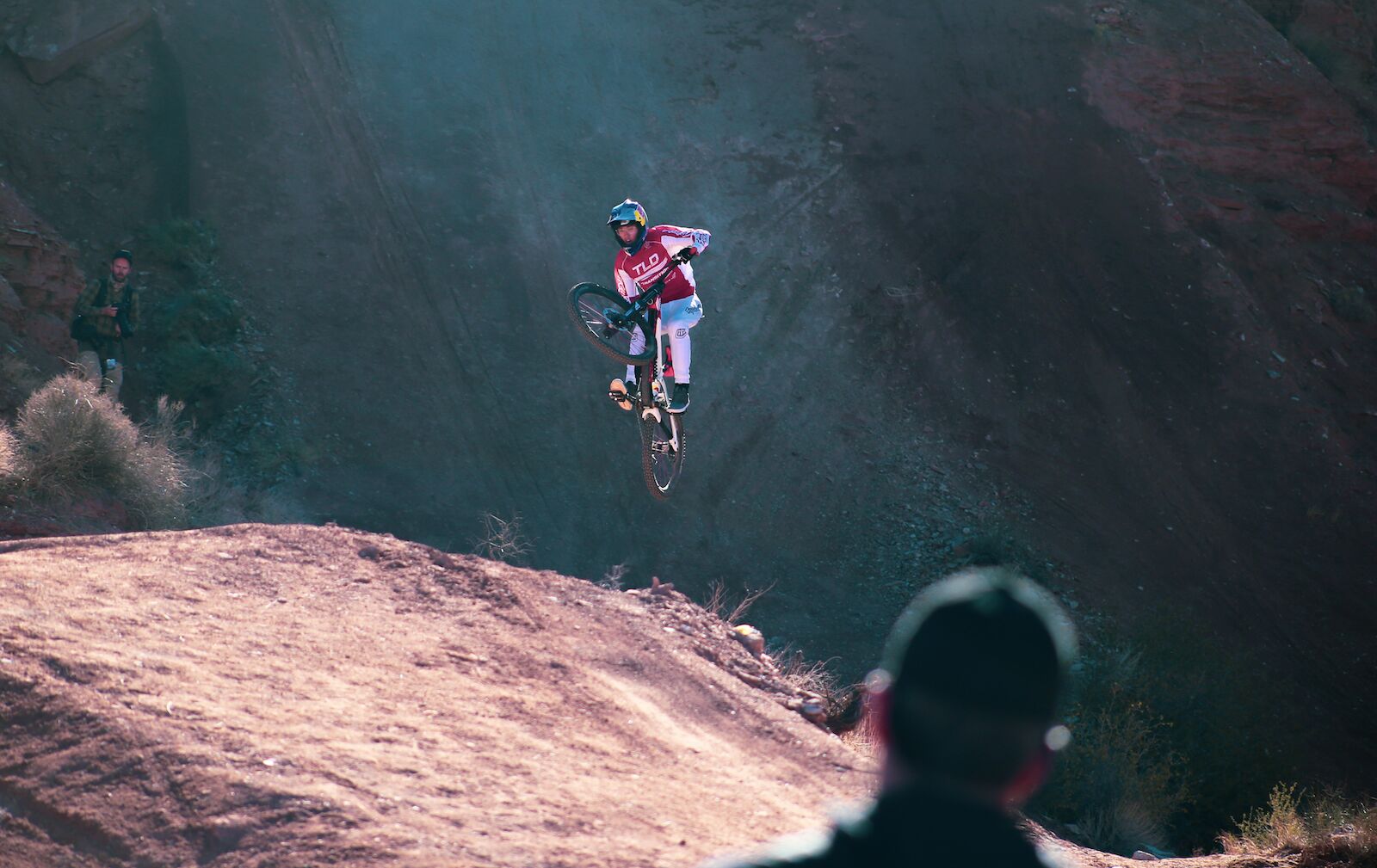
I specifically remember this guy in the front left stepping directly into my shot. Fortunately, I kind of like the final product, but that seems to happen far more often than I’d like. Photo: Suzie Dundas
While the travel journalism world tends to skew female, the extreme sport world does not, and events like this are even more male- dominated, as was obvious as I walked the course from bottom to top on a media tour. Though our group touring the course included both men and women, the majority of the women were wives, girlfriends, or sponsors – very few were journalists. And none of the athletes are women or female-identifying, nor have they even been. In fairness to the former Red Bull Rampage racer who showed me around the course, his answer was a rousing “for sure!” when asked if a woman would be allowed to compete – if she qualified, of course, based on the qualifying scale made for and by men.
During events like this and others, the general vibe is always the same – it’s a subconscious boys’ club. I almost always get asked if I’m a photographer or journalist, with a somewhat surprised “oh” as the response. It’s not uncommon for men to step in front of my shots or jump in if I’m trying to talk to someone — and it’s hard not to think it’s because they assume I’m someone’s wife or girlfriend, not someone trying to do the same job as them. Unsolicited advice is common, and while I never mind advice if it’s during a conversation, it’s easy to tell the difference between genuine tips and someone trying to “give the new person pointers.” It feels akin to being treated like an intern in an office, as if I’m perpetually “the new kid” who needs all the help she can get. While I like to think most men aren’t doing it on purpose, men have a responsibility to examine the unconscious things they’re doing that turn women off from feeling welcome, from something as minor as taking all the seats in the media tent to something a major as only recommending men for writing and editing jobs.
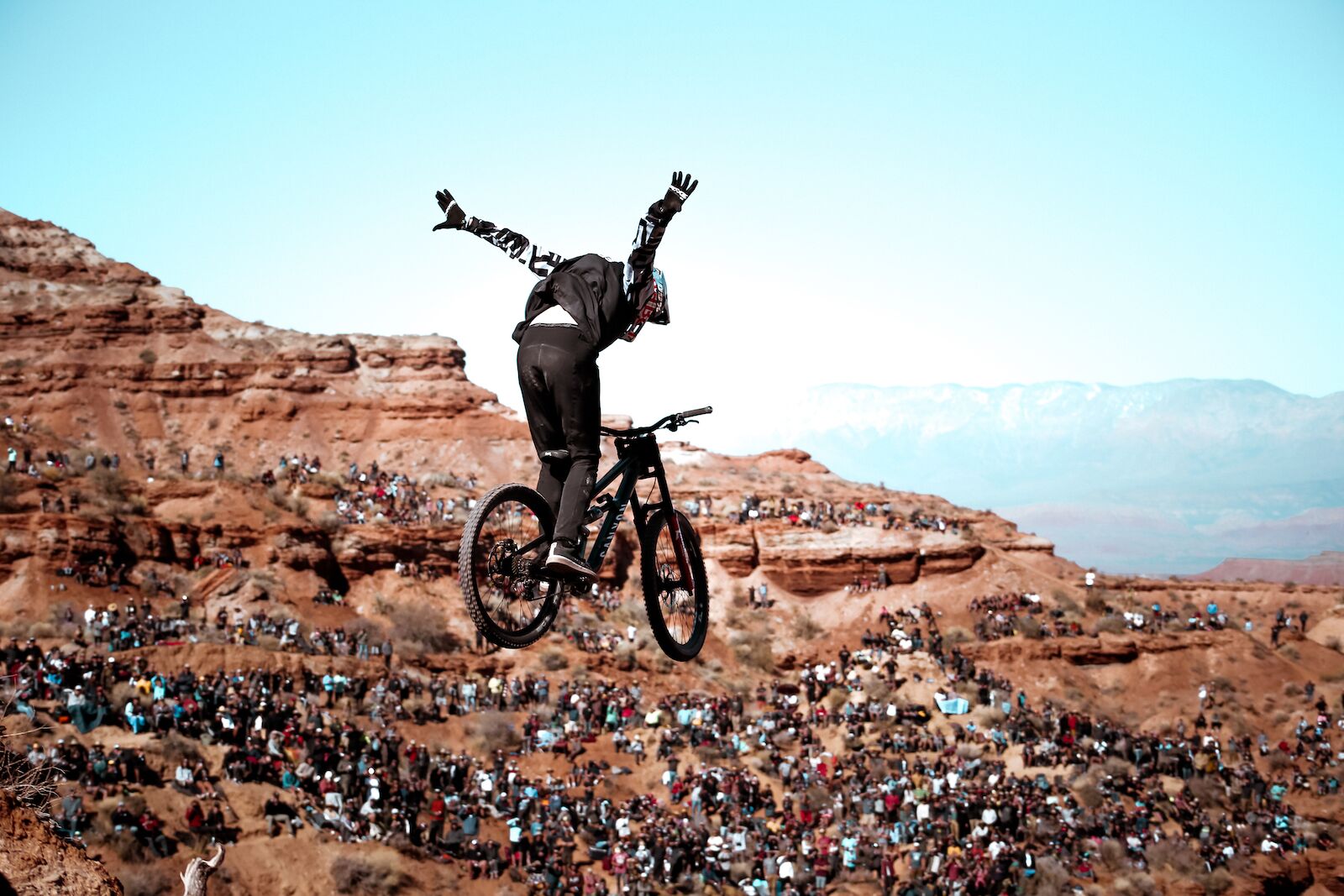
Spectators crowd the cliffs to watch the Red Bull Rampage riders compete. Photo: Suzie Dundas
Post-event, being a female isn’t a problem, in my experience, for pitching coverage, but ultimately, being one of the few women at events is noticeable and feels it requires more effort than it should to work my way in to stories and interviews. I like to think that photos and stories speak for themselves; I doubt if many people ever notice bylines, anyway. Ultimately, I love extreme sports like mountain biking and won’t stop covering them – but I do hope to see more women coming into the field. Maybe we can build our own old girls’ club one day.